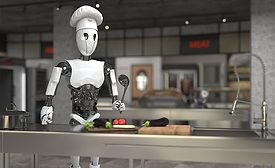Home » Keywords: » hygienic design
Items Tagged with 'hygienic design'
ARTICLES
Although the 3-A Standards are not regulations, many regulatory authorities treat them as such to permit the use of equipment for food or dairy processing
Read More
Factors to Consider Before Making Decisions, and the Importance of Training
New hygienic design guidance focuses on food safety and quality, offering a step-by-step approach to hygiene risk management
December 16, 2024
Designing for Greatness while Considering Total Cost of Ownership
The total cost of ownership, and not only the price tag, is critical to consider when evaluating the hygienic design of equipment
April 10, 2023
Sanitation Success Rests on a Three-Legged Stool
Sanitation success is a prerequisite to food safety and quality and rests on three "legs": people, programs, and hygienic design and maintenance
August 15, 2022
Developing a Culture of Hygienic Design under the Smarter Food Safety Umbrella
The learnings of a storied career in food plant sanitation
October 18, 2021
Never miss the latest news and trends driving the food safety industry
eNewsletter | Website | eMagazine
JOIN TODAY!Copyright ©2024. All Rights Reserved BNP Media.
Design, CMS, Hosting & Web Development :: ePublishing









